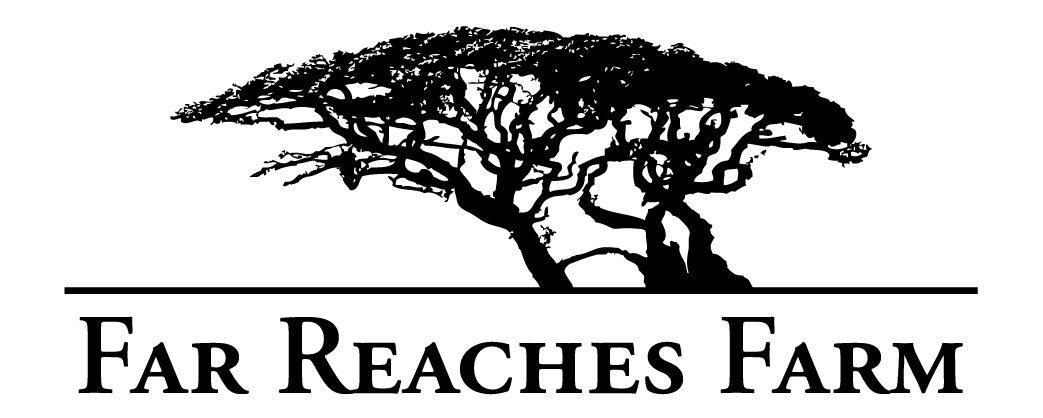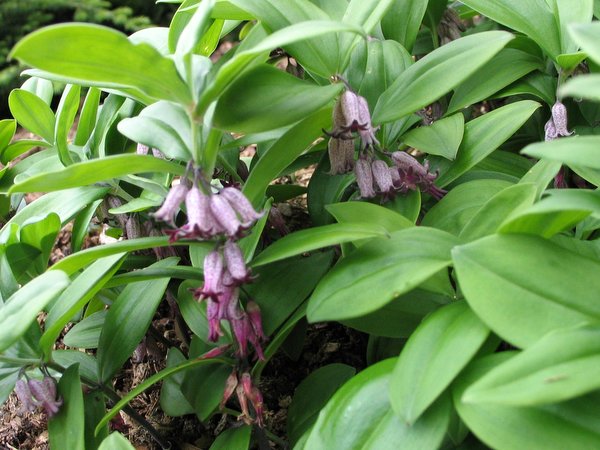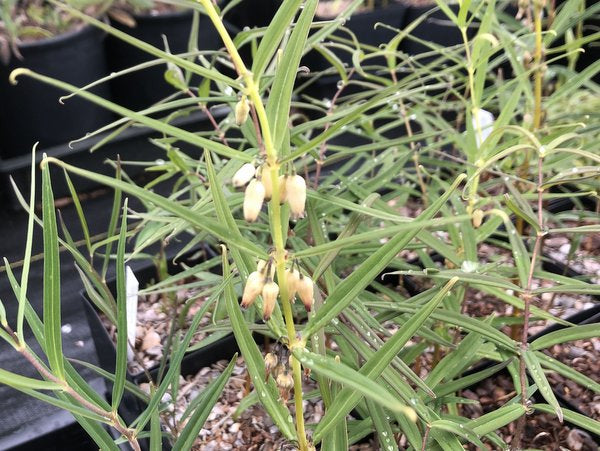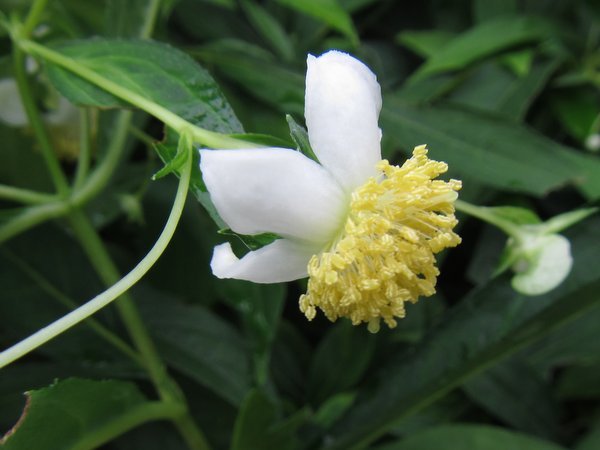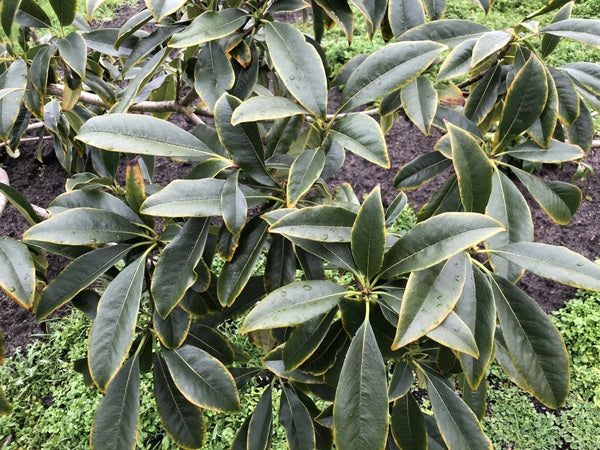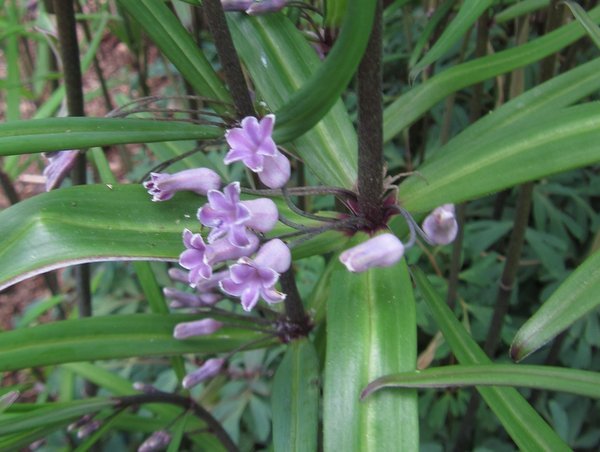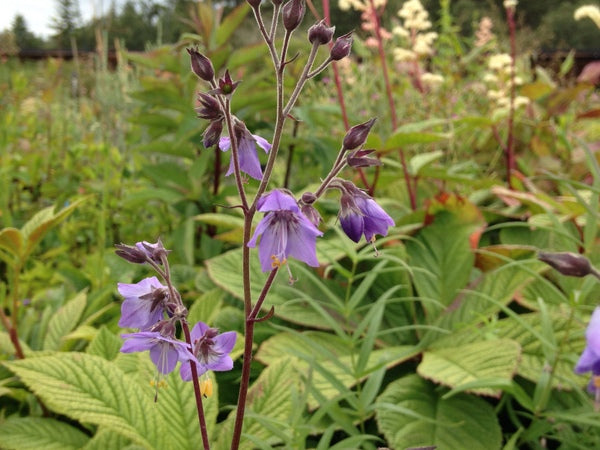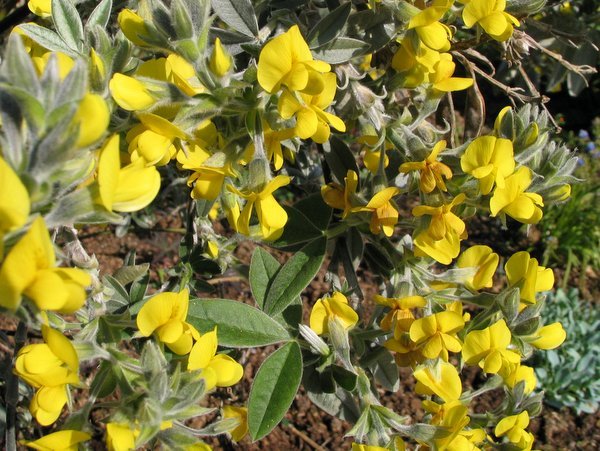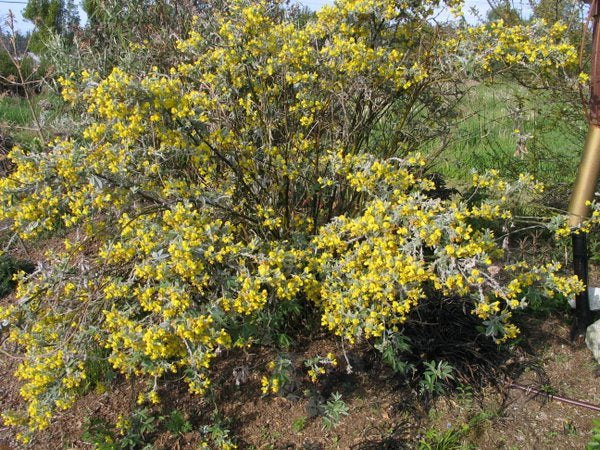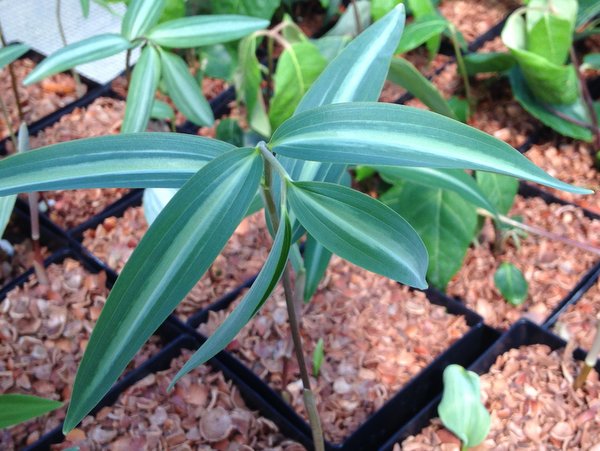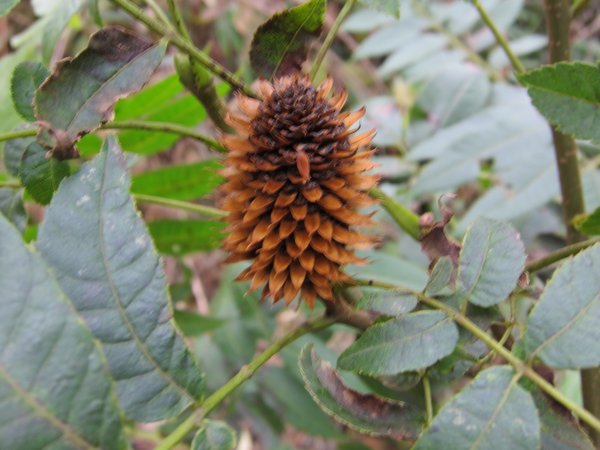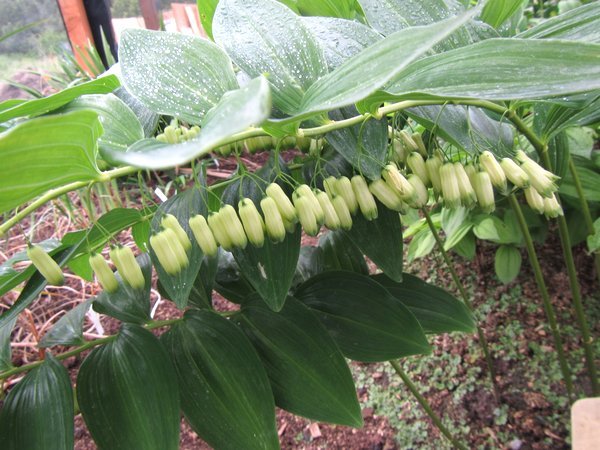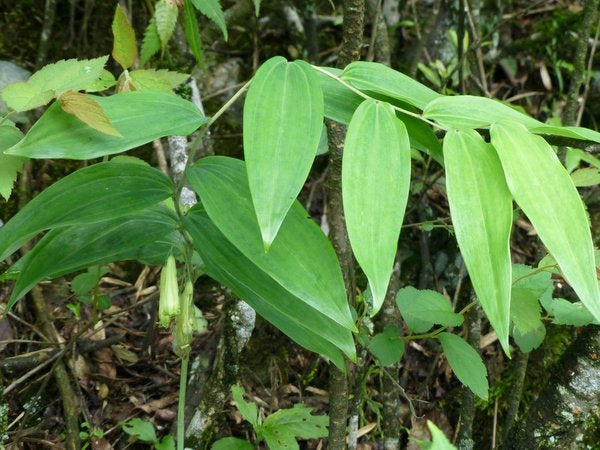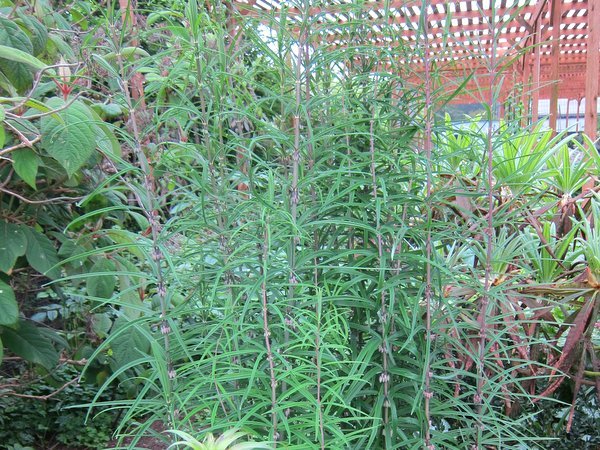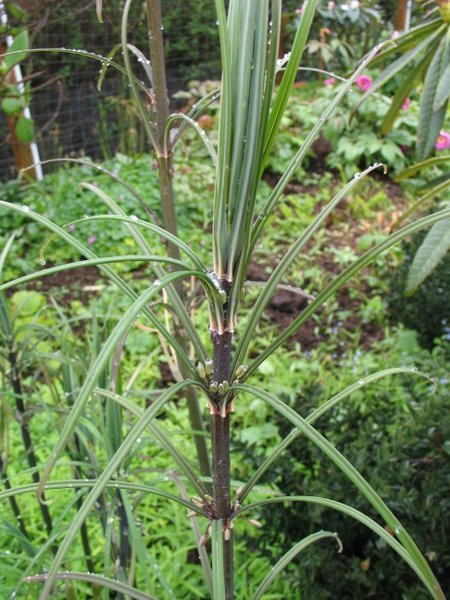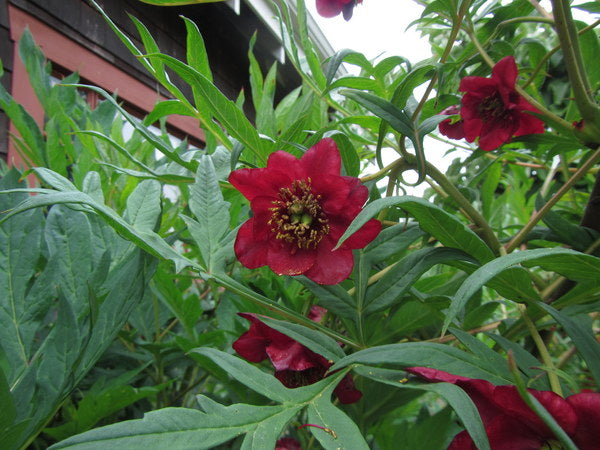Sort by:
235 products
235 products
High elevation Bolivian evergreen pinnate-leaved tree in the Rose family whose gorgeous irregular shape and exceptional exfoliating bark gives us fever dreams. Flowers are apetalous nothings but given its abundance of attributes, expecting showy petals is akin to disappointment in the physical shortcomings of the Duke in The Bridgertons. The Polylepis species we have observed in adjoining Argentina basically grew in rock with roots reaching down to moist soil so best in a lean, mineral-based soil that drains well. Small plants that will grow quickly. The collector speculated Z6b hardiness but ours has only gone to 10F with no damage
This is a remarkable species in the Theaceae or Camellia family, Native to Yunnan, Myanmar and Vietnam with this collection hailing from the latter. Evergreen trees rarely reaching 50' or more but doubt if you will have to contend with that eventuality! Large white flowers with yellow anthers occur in late winter and early spring. Suitable only for very mild gardens and worth trying on a wall.
Adorable dwarf Chinese Solomon's Seal to just 4 or 5 inches tall. This has lovely light purple flowers which often causes Polygonatophiles to swoon leaving them prone in the garden where they awaken to smell the delightful vanilla fragrance emanating from these small jewel-like flowers which induces further swooning. This is simply a clever pollination mechanism involving repetitive nose transferal of pollen but be prepared and don't wear your best clothes. These are divisions originally from a Diana Reeck 1996 collection in China.
Our collection of this interesting Solomon's Seal from the Cangshan in Yunnan way back in 1997 when we were with Kunming Botanic Garden. This has bamboo-like new growth which is quite striking and tiers of verticillate lanceolate leaves on stems to 6' gives great texture. The leaf axils are crowded with small pale flowers followed by orange-red fruit in the Fall. Tolerant of our cool full sun and part sun is ideal.
An unusual Asian hydrangea relative that has quietly won us over by growing larger each year and consistently flowering under a regime which could only be generously described as one of benign neglect. This makes a small broadly rounded twiggy deciduous shrub to 2'-3' in the garden although older specimens in the wild are said to get to 5'. Narrow willow-like green leaves with small teeth along the margins combine well with the late summer-fall small white flowers. The 4-petaled fertile flowers have a prominent yellow button of stamens which the infertile flowers lack. We have seen accounts of this growing well in North Carolina and southern Indiana. This will be happiest in light shade or part eastern sun. Platycrater hails from southeastern China in provinces near to Shanghai and also from Shikoku in Japan. These two geographical populations are separated by some authorities based on hairs on the leaf underside and we are making a note to self to take the hand lens to a leaf as soon as we can. Why not now you ask? How can you leave us hanging in such suspense? It is winter as we type this and there are no leaves but we will get to it asap!
A Hinkley collection from Taiwan of this surprisingly tough broad-leafed evergreen shrub. We have planted it out in full exposure here in our heinous windy maritime steppe and it survives far better than it should having taken 10F. We should really be brought up on charges. We can imagine if being glorious in a more sheltered position where it can grow 10'-15' tall with rounded clusters of fragrant small yellow flowers.
From a 2012 collection in China by Goteborg Botanic Garden's three Henrik's including Henrik Zetterlund and his sense of humor is all over the expedition acronym. This is Polemonium chinense var. chinense based on the glabrous stems. Violet flowers, rarely white in late spring and early summer. We keep waiting for a white one.
Our collection from Yunnan in 1997 of this cream of the crop higher elevation Piptanthus. Imagine our excitement seeing just 3 plants growing in a rubble outflow at the base of a steep hill after hours of walking across the valley of the Gang Ho Ba. Great silvery silken trifoliate foliage and large yellow pea flowers. This makes a multistemmed rounded shrub to 6' tall in our border. Most folks mistake it for a shrubby Argyrocytisus (Cytisus) battandieri until it blooms with flowers evocative of Laburnum. We've grown and killed several collections of the green-leafed P. nepalensis but this variety (which we have offered in the past as P. aff. tomentosus and much earlier as P. forrestii) is far hardier having withstood early November 14F with strong winds despite not being hardened off as the previous week had been in the 60's. Thanks to Grahame Ware for sharing recent research in the genus and hopefully nailing down the correct name. With botany however, never say never.
What madness possessed us to make this esoteric cross between the usual maroon flowered species and the white flowered form? Consequences of a very liberal drug and alcohol policy is perhaps the best guess. Unflowered seedlings which will be either typical maroon pleianthum, typical white pleianthum f. alba or shades in between. We can definitively say the flowers will not be blue.
AKA 'Silver Stripe', 'Silver Lining'. This Japanese selection is totally Japanese. Presented in exquisite understatement are the elements of design, function and harmony plus all of those other mysterious criteria which our video-deadened occidental minds cannot begin to grasp but can still appreciate the inclusion. Silver stripes on the leaves puts this at another level.
Curious and uncommon walnut relative from our Asian seed collection where we found this as part of the rich mixture of trees and shrubs on steep mountain flanks. Pinnate leaves harkening to the family Juglandaceae but instead of nuts in a hard shell, this has nutlets in vertical ornamental cones which persist all winter. Too cool for school! The small cones have very small and insignificant yellowish flowers in June and July but the value comes from the long winter interest.
A Tony Avent collection from Korea's Jeju (Cheju) island of this very floriferous form of this Solomon Seal species. Large green-tipped white bells walk down the aisle underneath the 2' arching stems making this one of the finest expressions of the species. Polygonatums are an integral part of the mix in the shade garden and are a great genus to collect as there are lots of species with new ones still being discovered in the wild.
A fine Chinese species which we have seen on several plant hunting trips to China from Guizhou Province to Hubei. So often we have seen the 24"-30" arching out provocatively from a slope alongside the trail with the yellow fall leaves scarcely sheltering the clusters of black fruit held beneath. Someday we will have to go in the spring to see the green-tipped white flowers. This is a species in some taxonomic flux at the moment so hard to say where this will eventually wind up but this is one of the Polygonatum cyrtoneuma found in cultivation.
Second generation plants from our collection of this Solomon's Seal from the Cangshan in Yunnan. This has narrow leaflets arrayed in tiers with small bell-shaped pale white flowers overlaid in a dusky wash and which are clustered near the leaf bases which later become red-orange fruit bunched like small grapes. Surprisingly sun tolerant given enough water. In our lath house shade garden which is fairly bright, this has become quite impressive in the last few years making a bamboo-like clump of herbaceous stems to 7'-8' which makes us very happy.
A woody species peony we first saw in Yunnan in 1997 growing in the open woodland surrounding the alluvial plain of the Ganghoba valley with Dipelta, Rodgersia and Arisaema. This will get 4'-6' tall with nicely dissected foliage and the small but intense flowers on these young, seed-grown plants will likely be red although orange is possible as we have both and bees will be bees.
